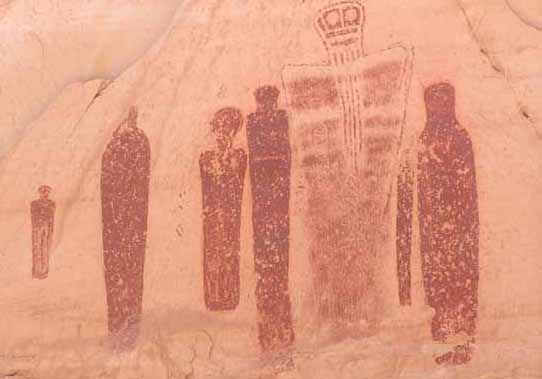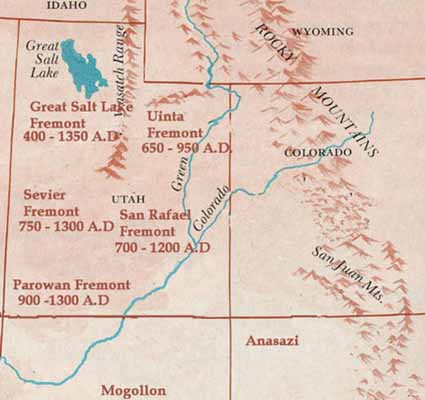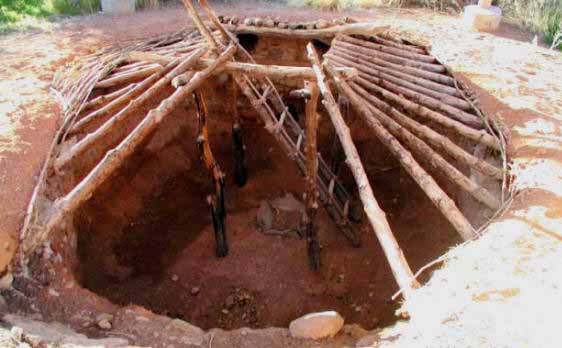


Reconstructed Pithouse - State Park, Boulder, Utah
The Fremont culture or Fremont people, named by Noel Morss of Harvard's Peabody Museum after the Fremont River in Utah, is an archaeological culture that inhabited what is now Utah and parts of eastern Nevada, southern Idaho, southern Wyoming, and eastern Colorado between about 400 and 1300 AD.
The Fremont culture unit was characterised by small, scattered communities that subsisted primarily through maize cultivation. Archaeologists have long debated whether the Fremont were a local Archaic population that adopted village-dwelling life from the neighboring Anasazi culture to the south, or whether they represent an actual migration of Basketmakers (the earliest culture stage in the Anasazi Culture) into the northern American Southwest or the area that Julian Steward once called the "Northern Periphery".
The Fremont have some unique material culture traits that mark them as a distinct and identifiable archaeological culture unit, and recent mtDNA data indicate they are a biologically distinct population, separate from the Basketmaker. What early archaeologists such as Morss or Marie Wormington used to define the Fremont was their distinctive pottery, particularly vessel forms, incised and applique decorations, and unique leather moccasins. However, their house forms and overall technology are virtually indistinguishable from the Anasazi. Their habitations were initially circular pit-houses but they began to adopt rectangular stone-built pueblo homes above ground.
Marwitt (1970) defined local or geographic variations within the Fremont culture area based largely on differences in ceramic production and geography. Marwitt's subdivisions are the Parowan Fremont in southwestern Utah, the Sevier Fremont in west central Utah and eastern Nevada, the Great Salt Lake Fremont stretching between the Great Salt Lake and the Snake River in southern Idaho, Uinta Fremont in northeastern Utah, and arguably the San Rafael Fremont in eastern Utah and western Colorado. (The latter geographic variant may well be indivisible from the San Juan Anasazi.) From Ellie Crystal